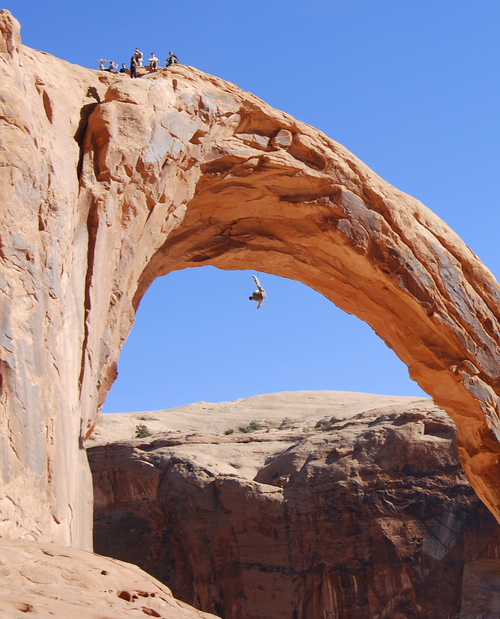This is an archived article that was published on sltrib.com in 2013, and information in the article may be outdated. It is provided only for personal research purposes and may not be reprinted.
A draft appraisal for a massive recreational land exchange between the state and federal governments has found a value gap favoring Utah to the tune of $14 million.
Under a 2009 congressional act, Utah's School and Institutional Trust Lands Administration (SITLA) will trade holdings with scenic and conservation values, mostly in Grand County, for federal land with oil and gas potential in the Uinta Basin, but the lands exchanged must be of equal value.
The appraisal gap can be explained by declines in natural gas prices since the land exchange was authorized, reducing the value of the federal parcels in play, SITLA's general counsel John Andrews told his board Thursday. It also reflects the value the real estate market accords places with gorgeous vistas, such as state-owned parcels in Castle Valley.
But state and federal officials emphasized the numbers are preliminary and the gap could shrink when the appraisals are finalized in the next six weeks.
"I look forward to the next steps for bringing this important land exchange to fruition. An important step in the process is for the Department of Interior, Office of Valuation Services to release the final approved appraisals and I await their findings," state BLM Director Juan Palma said.
In the deal, which is undergoing an environmental assessment, BLM would acquire nearly 46,000 of state acres in exchange for 35,516 acres. Those state lands were valued at $35.8 million versus $21.8 million for the federal lands, Andrews said. Federal law allows for BLM to cover 5 percent over the appraised value with cash, but that still leaves a $13 million difference.
If the appraisals hold, some of the state sections will have to be pulled from the exchange unless a foundation steps in to purchase them on behalf of federal authorities.
"The legislation provides a phasing of lands reduction to ensure the really good stuff, Corona Arch and Castle Valley, would be conveyed to BLM," Andrews said. "As we reduce the footprint of trust lands being conveyed, some sections, most are in Vernal, Book Cliffs and Nine Mile Canyon, are going to fall out of the exchange."
Hanging over this trade is the specter of HB148, the 2012 law that demands all federal lands within Utah, save national parks and congressionally designated wilderness, be transferred to the state by the end of next year. Should this controversial measure be implemented, the sections SITLA gives up would come back to the state.
But few are banking on that transfer happening anytime soon and federal authorities remain eager to acquire state holdings around Arches National Park.
Because these state sections are so scenic, they may not be appropriate for resource extraction and the other activities in line with SITLA's mission, which is to maximize revenue to build a permanent schools endowment.
Scenery and recreation are also what make these state lands far more valuable than the federal lands. For example the Corona Arch section was appraised at more than $2.5 million, or $4,000 an acre, according to Andrews. This arch is a popular hiking destination outside Moab and has recently become a hotspot for rope swinging thanks to YouTube videos that have gone viral.
A state section on the Slickrock mountain bike trail appraised for $1,500 an acre. Meanwhile, federal oil and gas sections appraised for $500 to $600.
Officials expect to consummate the exchange by the end of this year.



